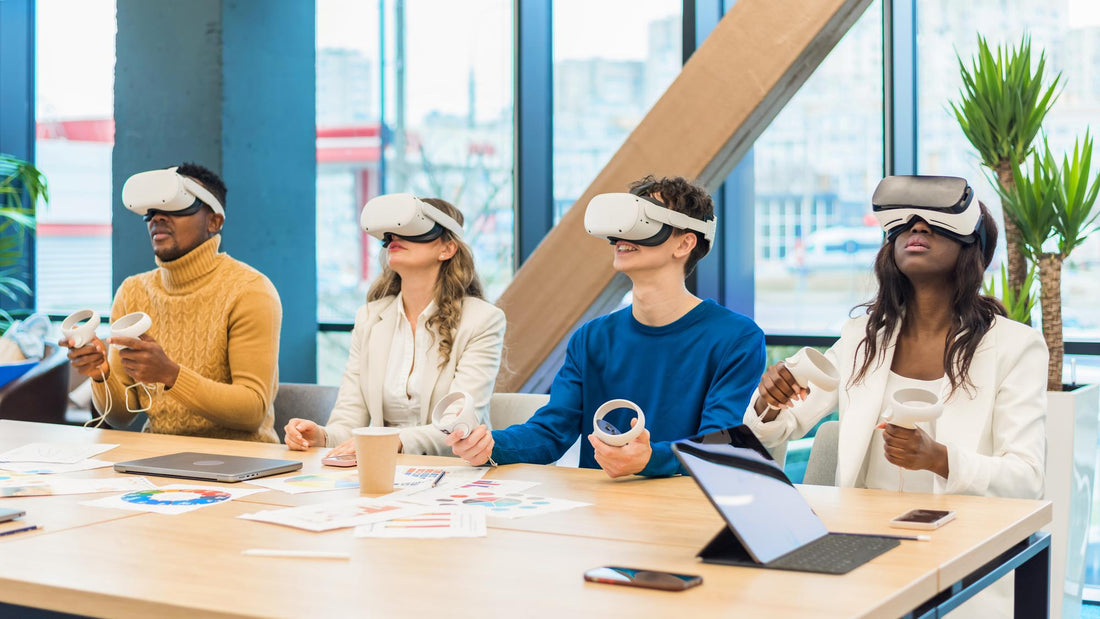
The Rise of Social VR: Connecting with Friends in Virtual Worlds
Share

Social VR has emerged as a powerful tool for connecting with others in virtual worlds in recent years. Unlike traditional video calls or messaging apps, social VR provides users with a sense of presence and embodiment, allowing them to interact with friends and family in immersive shared experiences. Social VR is revolutionizing how we connect with others in the digital age, from virtual concerts to online games.
As social VR continues to grow in popularity, it's important to explore this technology's potential benefits and risks. In this article, we'll delve into the advantages of social VR for social connections, the types of platforms available, and examples of successful social VR communities.
Whether you're a seasoned virtual world explorer or new to social VR, this article will provide insight into how social VR changes how we connect with friends and loved ones.
The Advantages of Social VR for Social Connections
Social VR offers several advantages for connecting with friends and family in virtual worlds. Here are some of the key benefits:
Increased Sense of Presence and Embodiment
Social VR provides a level of immersion and embodiment that traditional video calls or messaging apps can't match. Users can feel like they're there with their friends and family by putting on a VR gaming headset and entering a virtual space. This can lead to a stronger sense of connection and more meaningful social interactions.
Opportunities for Immersive Shared Experiences
Social VR also allows for a wide range of immersive shared experiences. Whether attending a virtual concert, exploring a digital art exhibit, or playing games together, social VR provides opportunities for socializing in unique and engaging ways. As a result, social interactions become more memorable and exciting.
Access to a Global Community
One of the most exciting aspects of social VR is the ability to connect with people worldwide. Virtual spaces can bring together individuals who may never have met otherwise, providing a cross-cultural communication and learning platform. Perspectives broaden, and users develop new friendships and connections.
Types of Social VR Platforms
There are several social VR platforms, each with unique features and advantages.
Social VR Games and Experiences
Many social VR platforms are centered around games and experiences. These platforms allow users to enter virtual worlds and engage in various activities with others, such as playing games, exploring environments, and attending events. Examples of social VR games and experiences include VRChat, Rec Room, and Sansar.
Social VR Chat Apps and Platforms
Some social VR platforms are focused on communication and chat. These apps and platforms allow users to interact with others in virtual spaces, typically through avatars or virtual representations of themselves. They may offer features such as voice and text chat and tools for customization and personalization. Examples of social VR chat apps and platforms include AltspaceVR, Mozilla Hubs, and vTime.
Virtual Worlds and Metaverse Platforms
Finally, virtual worlds and metaverse platforms offer a broad range of social and entertainment features. These platforms allow users to create and customize their avatars, explore vast virtual worlds, attend events, and interact with others in various ways. Examples of virtual worlds and metaverse platforms include Second Life, Decentraland, and Roblox.
Examples of Successful Social VR Platforms
Social VR has grown significantly in recent years, with many successful platforms emerging. Here are a few examples of social VR platforms that have gained traction and developed thriving communities:
VRChat
VRChat is a popular social VR platform that allows users to create avatars, explore user-generated worlds, and interact with others in real time. The platform has a vibrant community of creators and users who regularly host events, games, and performances. VRChat has also gained attention for its use in virtual conferences and social gatherings.
Rec Room
Rec Room is a social VR platform that focuses on games and activities. Users can create avatars and participate in various games and challenges, such as paintball, dodgeball, and escape rooms. The platform also hosts regular events, such as concerts and trivia nights. It has a dedicated community of users who create and share their games and experiences.
Second Life
Second Life is a virtual world that has been around since 2003, making it one of the oldest and most established social VR platforms. It allows users to customize their own avatars, explore vast virtual worlds, and interact with others through chat, voice, and text. Second Life has a dedicated user base, with many users creating and sharing content, including virtual fashion, art, and architecture.
AltspaceVR
AltspaceVR is a social VR platform focused on communication and events. Users can attend virtual events, such as concerts and comedy shows, and interact with others through voice and text chat. The platform also allows for customization and personalization, with users able to create and customize their own avatars and virtual spaces. AltspaceVR has been used for various purposes, including social gatherings, conferences, and online classes.
***
In conclusion, social VR is a rapidly growing and exciting field that has the potential to revolutionize the way we connect with others online. From games and experiences to communication and virtual worlds, many different types of social VR platforms are available, each with unique strengths and advantages.
Successful social VR platforms like VRChat, Rec Room, Second Life, and AltspaceVR have shown a strong demand for immersive and engaging virtual experiences that allow us to connect with others in new and exciting ways.
As the technology behind social VR evolves, we can expect to see more immersive platforms emerge, connecting us with others in increasingly lifelike and interactive virtual spaces. Social VR offers endless possibilities for social connection and community building.
